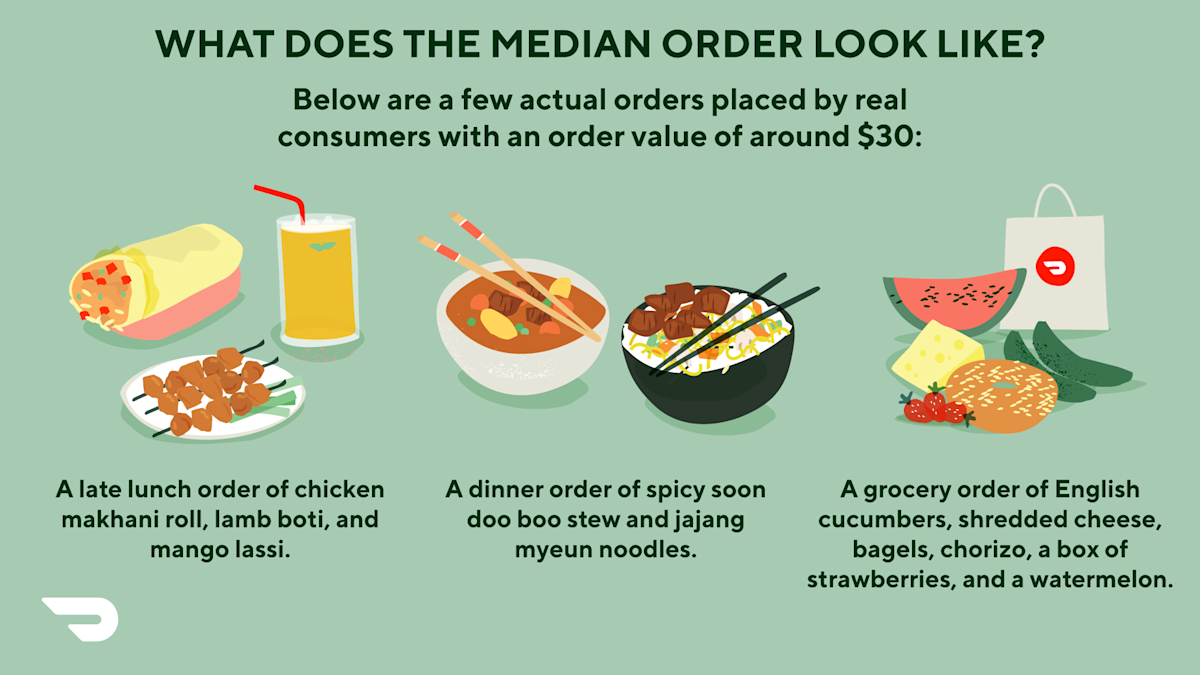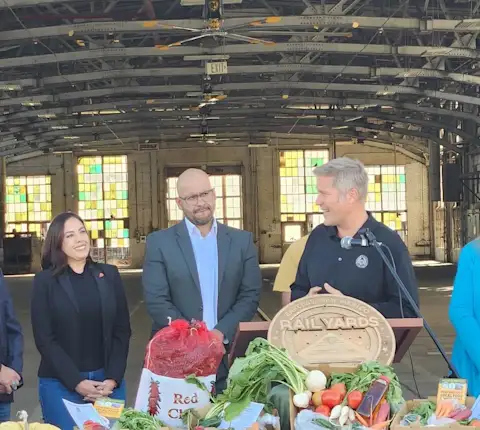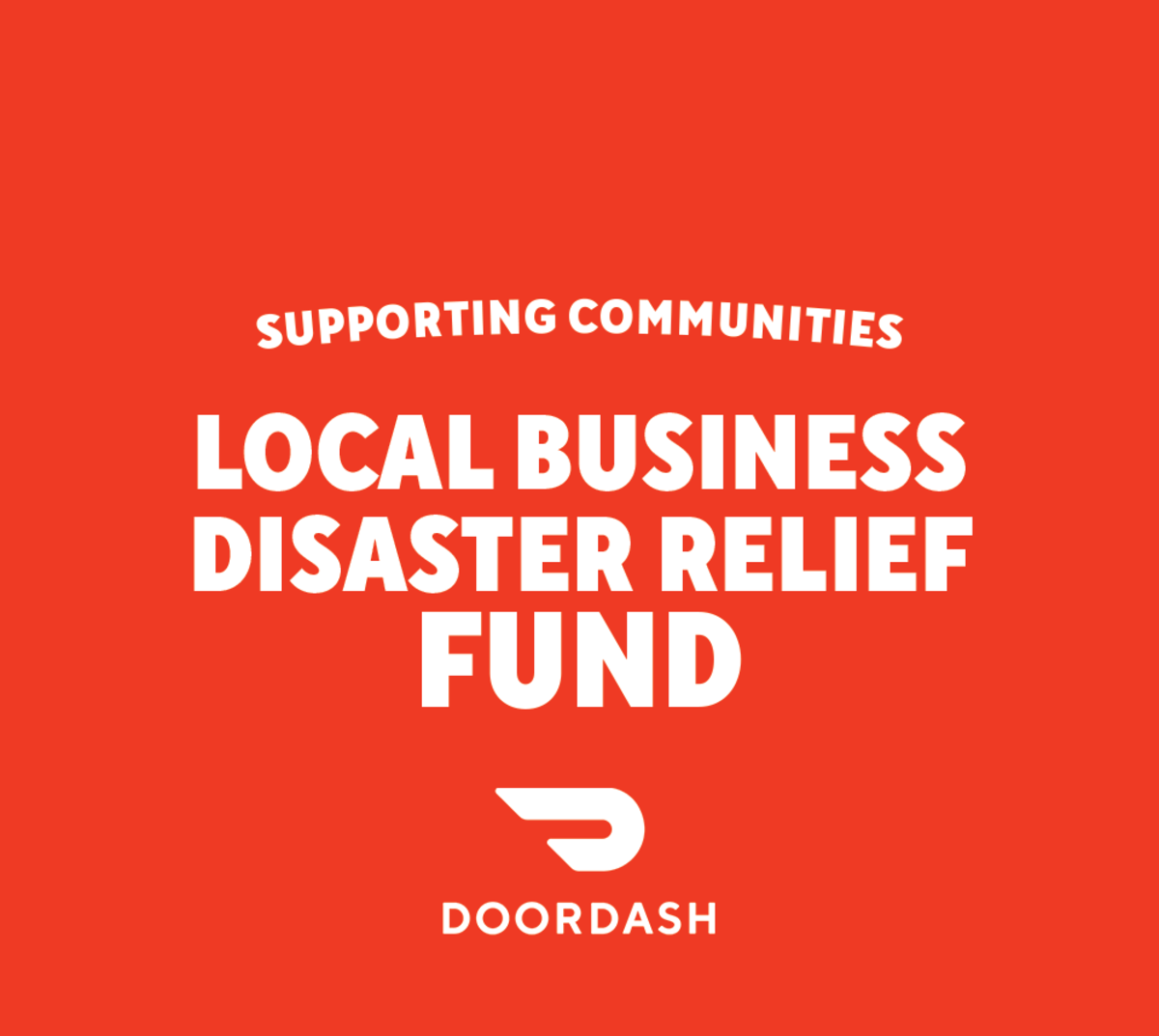Every month, millions of people across the country place an order through the DoorDash app. From coffee runs to groceries to weeknight family dinners, consumers are using DoorDash to get time back for themselves. In total, we estimate that DoorDash has saved US consumers 446 million hours in 2023. That’s more time spent with family, finishing up work projects, or resting and relaxing. However, it's not just time savings that make DoorDash convenient. For many, DoorDash enables access to meals and items that they might not otherwise be able to get themselves.
“I am thankful that this service is available in my city. It allows me to order from grocery and restaurants that would not have been available for delivery before. It's been very helpful with my busy lifestyle. It is also affordable, fast and convenient.” – Consumer in Wisconsin.
By income, DoorDash customers reflect the diversity of communities across the United States
Last year, DoorDash fulfilled almost 550 million deliveries including meals, groceries, and more to consumers based in low-income communities across the US.* The distribution of consumers on DoorDash by household income was broadly consistent with the US population.** In our latest consumer survey, 33% of consumers said they had an annual household income below $50,000 and 50% had an annual household income below $75,000 — about the same as the US median household income.
Income level doesn’t dictate order value or frequency
Consumers see the value in DoorDash and how we’re growing access no matter their level of income and, while differences in average order value exist, they are equivalent to about one more item in a consumer’s cart. The typical order value among consumers with household incomes below $75,000 was around $31 while for consumers above this income threshold it was around $39, including the value of the cart as well as any additional taxes, fees and tips paid.
On our platform as a whole, the median DoorDash order value was about $30 and 75% of orders placed in the last year were below $43 in value.

Regardless of household income, the majority of consumers in our survey place orders below $40, including taxes, fees and tips.
Order frequency was also similar. For example, 72% of consumers in our survey with a household income below $75,000 had placed more than one order on the platform in the past month, compared with 69% of higher earning consumers.
Delivery fulfills a critical role for both food and retail items, especially for households earning below $75,000. These respondents were twice as likely to skip a meal entirely or eat snacks if they weren’t able to get a meal delivered by a third party app compared to consumers above this threshold.
The majority of lower income consumers surveyed agree that DoorDash is less expensive than other food delivery options and that the fees DoorDash charges consumers are reasonable. Two-thirds of consumers with household incomes below $75,000 agree that it’s easy for them to order food through DoorDash on their budget and 71% agree that DoorDash offers good promotions and discounts. Additionally, in our survey, consumers in this income bracket were more likely to say that ordering from DoorDash has gotten more affordable in the last year compared to higher-income consumers.
“For someone on a limited budget that works full time and has two growing teenage boys, DoorDash has been a lifesaver on multiple occasions.” – Consumer in Pennsylvania.
Broadening access to meals
70% of consumers with household income below $75,000 have used DoorDash to order from merchants that would otherwise be too far away (compared to 59% for consumers above this income threshold). Why? Because many are too far away with limited access to transportation. 27% of consumers with a household income below $75,000 say that one of the main reasons they use a delivery platform to order a meal is because it's difficult for them to get to the restaurant while only 13% of higher income consumers say the same thing.
Keeping kitchens stocked with staples
Consumers with a household income below $75,000 were also more likely to have used DoorDash to order a grocery item compared to higher-income consumers (43% compared to 35%) with one in four of these consumers saying the main reason is because it was difficult to get to the store. Among those who had used DoorDash to order grocery items, 64% agreed that doing so made it easier for them to stay within their budget and 76% said that it was easier to discover new items.
“As a graduate student with a busy schedule and limited budget, I often find it challenging to find time for cooking or traveling to distant grocery stores, especially without a car. DoorDash has been a lifesaver for me in these situations. It enables me to get food and groceries delivered when I'm too busy, ensuring that I don't miss meals. Additionally, the convenience of DoorDash is a financial relief, as saving money is crucial for me as a student. I'm genuinely thankful for the support DoorDash provides”– Consumer in Pennsylvania.
Making DoorDash more affordable
DoorDash is always working to make the platform more affordable. Over 18 million consumers who are DashPass or Wolt+ members, pay $0 delivery fees (and reduced service fees for DashPass members) on eligible orders. Additionally, over the past two years, DoorDash has reduced fees for consumers who are not DashPass members by 12%, reflecting our efforts to continue making our platform more affordable for all. We’re proud of our work to keep DoorDash affordable for everyone so consumers can ensure their shelves are stocked with groceries when the store is too far away, eat a favorite dinner instead of skipping a meal, and connect to their community in new ways.
* We define a low-income community as: A zip code where any of these three criteria are met: 1) the zip code’s poverty rate is 20% or greater, 2) the zip code’s median family income is less than or equal to 80% of the statewide median family income; or 3) the zip code is in a metropolitan area and has a median family income less than or equal to 80% of the metropolitan area’s median family income.
** From 2022 Census Data


